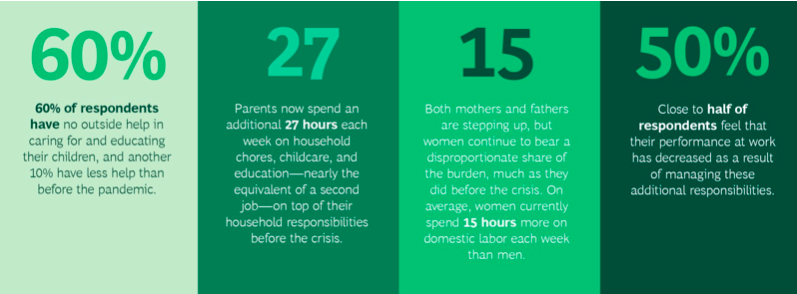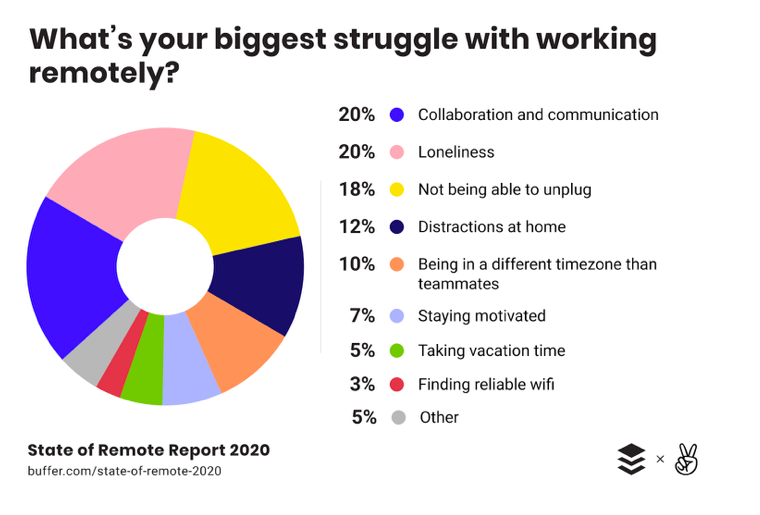Working from home has been the norm for much of the world since early 2020. From the beginning, many companies saw benefits such as higher levels of productivity.
Despite the perks, managing remote teams and working from different locations isn’t without its fair share of challenges. Working from home will become more of a mainstay for many companies post-COVID. Therefore, knowing how to tackle its related issues is essential.
Here’s what working from home means for managers and remote workers and how you can smoothen the challenges.
Working From Home: A Trend That Was Increasing Before the Pandemic
Working away from the office was gathering pace long before the pandemic. In 2019, for example, research by Global Workplace Analytics showed that telecommuting in the US alone had risen by 159% since 2005. For many people, working from home pre-pandemic provided a way to reduce travel time and expenses. People were also able to spend more time with their families and care for loved ones.
The rise of the digital nomad before COVID-19 also played a role in more people adopting remote work. Many computer-based jobs can be performed from anywhere in the world.
The Challenges for Managers and Remote Workers
With any change of this magnitude, it's necessary to recalibrate procedures, workflows, and expectations. Moving to an online work environment presents several considerations for businesses and personnel.
Communication
When working remotely, visiting a colleague's desk is not an option. Moreover, with so many communication tools out there, knowing which to use for different purposes is difficult. Another communication-related issue is not knowing who is available, and when. Different people have different work schedules, and time zones also come into play.
Demonstrating Competence
In an office environment, enthusiasm and competence are easily visible to others. When workers are behind a computer screen, however, that is not always the case. This is a particular challenge when it comes to recruiting. Interviewees may feel like they can’t demonstrate their competence, while for recruiters, hiring without meeting in person is also tricky.
Adding household and care duties to a professional workload is taxing for everyone. For women, the challenges are especially prominent. According to Boston Consulting Group, mothers spent an average of 15 hours more than fathers doing domestic duties each week during the pandemic.

Isolation
The pandemic necessitated social isolation for many people across the world on both personal and professional levels. In Buffer’s 2020 State of Remote Work report, 20% of participants cited loneliness as their biggest remote working struggle.

Managing isolation is particularly challenging for managers when it comes to new hires. Those who have just joined the company may struggle to assimilate into the workplace, which can cause divisions between them and their colleagues.
Nurturing Career Opportunities
Working from home comes with numerous career progression challenges. Beyond struggling to demonstrate competence, networking is also difficult. As a result, some individuals may find themselves unable to access new opportunities.
Solutions to WFH Challenges
Regular Communication
Amidst the increase in remote and hybrid working there has been an increase in collaboration. Business is becoming more global and cross-functional, requiring better connectivity. According to Harvard Business Review, time spent on collaborative activities has soared by 50% and climbing.
For teams to remain productive from multiple locations, communication is essential. The modern workplace is experiencing a digital transformation and the right communication tools are necessary to effectively manage a remote workforce. For team managers, identifying the different platforms to fit your company’s requirements is vital.
Regular communication is also key to maintaining morale. “One of the most overlooked ways to motivate your team is through communication. Through effective communication your employees feel more empowered. It also gives them a sense of belonging, camaraderie and responsibility,” says entrepreneur and investor John Rampton.
Schedule regular online meetings to foster open, supportive communication and feedback from remote workers to ensure efficient and effective workflows.
Investing in Online Learning
Online learning can help employees improve their current role and industry knowledge while also picking up handy new skills. This kind of continued growth is important for nurturing career progression while working remotely.
Numerous online learning platforms tailored to businesses are available. Look for industry-specific courses that fit your needs.
Time Management
Managing time is often easier in an office environment. There are set hours, and establishing procedures is easier because employees are centrally located. When working remotely, however, workers can often lose track of time, feel disorganized and distracted, and even burn out.
For improved time management, consider investing in software that allows users to track how their time is spent. This technology also shows who is and isn’t online, making communication easier.
Recognizing Employee Achievements
WFH loneliness impacts the individual more deeply than just missing out on social interaction. Remote workers might also feel as though their achievements are not being recognized, which could cause them to question their self-worth and value in the company.
Show your employees they are appreciated. To recognize employee achievements while working remotely, schedule regular calls with your team, and one-to-one calls. Take the opportunity to acknowledge growth and accomplishments, and provide an opportunity for them to share what they’re proud of.
Also remember, now more than ever, employee well-being is becoming a key component of workplace culture, especially for those working remotely. Managers need to take the extra step to support employee well-being, which improves productivity.
New Employee Performance Measurements
A new working model requires a new way to measure employee performance. In the office, workers became accustomed to the idea that more hours equals higher output. However, past a certain point the opposite is true, as studies preceding the pandemic found.
It’s essential to establish better ways to determine employee productivity and performance in the WFH era. Focus more on results than hours clocked, and note the level of employee engagement and contribution. If goals are met while working six hours a day instead of eight, employees will be better rested.
What Is the Future of Working From Home?
Working from home is no doubt here to stay in some capacity. But will companies remain fully remote?
Well, that depends.
In February 2021, Spotify announced a work from anywhere policy. The music streaming service’s employees can work from wherever they want, even if that isn’t in an office. The flexibility inherent in this option is notable—if they want to go into an office or coworking space, they have the choice. Studies have shown that employees want more choice, rather than completely remote work. In 2020, for example, 72% of participants in a Slack survey said they wanted a hybrid working agreement after the pandemic.
Even with hybrid models, employees are likely to work from numerous locations—the WFH challenges and practices still apply.
Prepare for WFH Now
Not only do businesses need to adapt to the ‘new norm’ of remote workers, they must also reevaluate their talent acquisition strategy and how candidates are actually hired. Coupled with the fact that there will continue to be remote workers around the world post–COVID, managers need to be prepared now to minimize any WFH challenges to come.

Dean Mathews, OnTheClock
Dean Mathews is the founder and CEO of OnTheClock, an employee time tracking app that helps over 10,000 companies all around the world track time.


